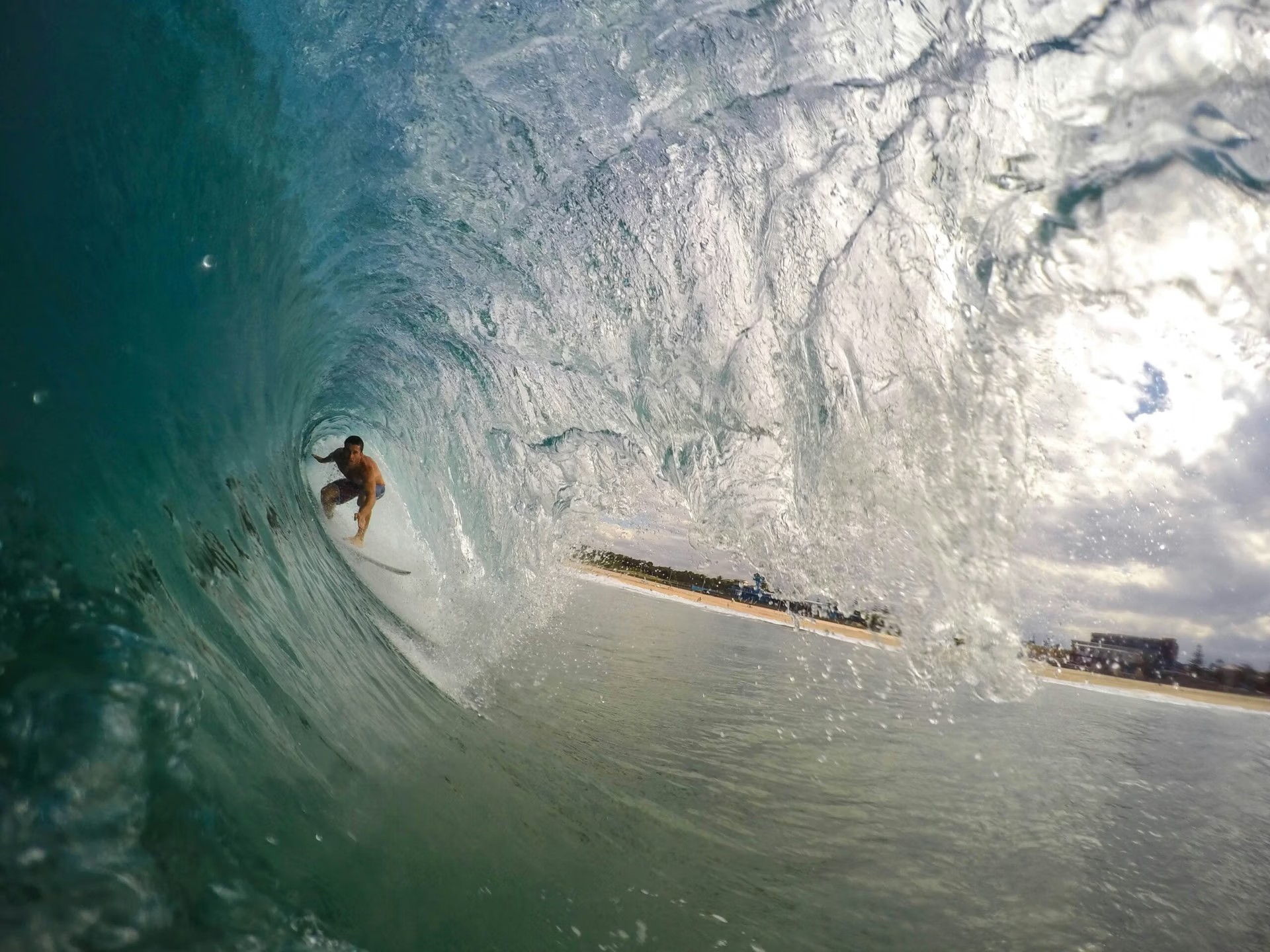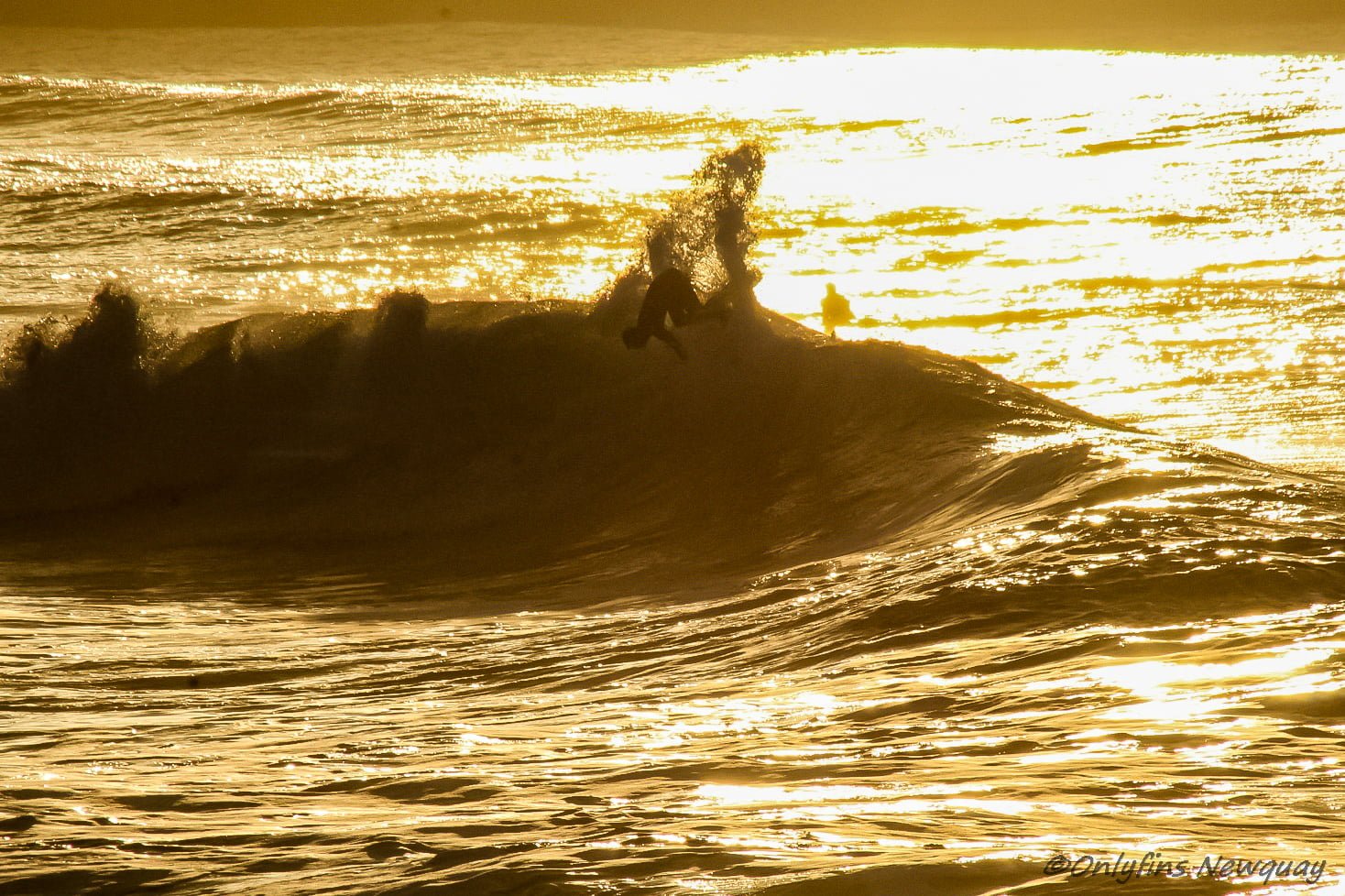
Aileen’s Big Wave Surfing: Riding the Giants and Beyond
Introduction to Big Wave Surfing Big wave surfing, a thrilling and exhilarating subset of the broader surfing discipline, has captivated

Introduction to Cornwall’s Surfing Scene
Cornwall, a southwestern county of England, boasts a vibrant surfing culture that has become a magnet for wave enthusiasts from around the globe. This coastal region is renowned for its unique geographical layout, presenting a rugged coastline adorned with spectacular cliffs and sandy, picturesque beaches. Such natural features are ideally suited for surfing, courtesy of the constant Atlantic swells that shape the waves perfectly.
The history of surfing in Cornwall dates back to the early 20th century, evolving into a significant aspect of local culture. Surfing is more than just a recreational activity here; it is a lifestyle embraced by many residing in this part of the UK. With numerous surfing schools, rental shops, and surf competitions held throughout the year, Cornwall’s surfing scene continues to thrive and beckon enthusiasts of all skill levels.
Among the myriad of beaches ideal for surfing, certain spots have gained international fame. Renowned beaches such as Fistral Beach in Newquay, Porthmeor Beach in St Ives, and Watergate Bay attract surfers with their exceptional wave conditions. These locations not only offer consistent and quality surf but are also ingrained with a deep-rooted surfing heritage, making them iconic within the surfing community.
Cornwall’s status as a top surfing destination is further cemented by its contribution to the UK surfing community. From hosting major surfing competitions like the Boardmasters Festival to nurturing local talent who have gone on to achieve global recognition, Cornwall has positioned itself as a cornerstone of British surfing. Its surf culture is celebrated annually, drawing in not only surfers but also spectators who relish the vibrant and dynamic atmosphere.
The allure of Cornwall’s surfing scene lies in its perfect blend of stunning natural beauty, exceptional wave conditions, and a rich surfing heritage, making it a paradise for those who seek the thrill of riding waves.
Criteria for the Best Surfing Beaches
Selecting the ideal surfing beach is crucial for maximizing your surfing experience. A primary factor to consider is wave quality. The best surf spots boast well-formed waves that are conducive for both longboarding and shortboarding. Consistency is another vital element. High-quality beaches maintain a regular swell, ensuring that surfers can catch waves nearly year-round, though conditions may vary with seasons.
Equally important are beach amenities. Top-tier surfing beaches offer facilities like restrooms, showers, and changing rooms, which contribute significantly to the overall convenience and enjoyment of the day. Additionally, the availability of nearby food and beverage options can make a day at the beach more comfortable.
Proximity to surf schools and rental shops is another essential factor, particularly for beginners. Access to professional coaching and rental gear can make a substantial difference in improving skills and ensuring safety. For more advanced surfers, specialized rental shops may offer high-performance boards suited to various wave conditions.
Speaking of safety, features such as lifeguard presence, clear signage, and easily accessible medical facilities can’t be overlooked. Strong currents, rocks, and other hazards can make surfing perilous, particularly for novices. A beach with vigilant lifeguards and clear safety guidelines greatly minimizes risk.
It’s crucial to recognize that individual beaches cater to different skill levels. For beginners, beaches with gentle breaks and sandy bottoms are most suitable, as these conditions foster a safer and more forgiving environment for learning. Intermediate surfers might seek beaches with a mix of soft and more structured waves to challenge their developing skills. Advanced surfers, on the other hand, often gravitate toward beaches known for powerful, fast-breaking waves that offer more significant opportunities for tricks and maneuvers.
Understanding these criteria helps in making an informed choice, ensuring that surfers—whether seasoned pros or complete beginners—find the waves and environment that best match their abilities and enhance their particular surfing experience.
Top 15 Surfing Beaches in Cornwall
Cornwall, a renowned surfing destination in the UK, boasts a multitude of beaches that cater to all types of surfers. Here is an in-depth look at the top 15 surfing beaches in Cornwall, each offering unique sets of waves and surrounding features.
1. Fistral Beach: Located in Newquay, Fistral Beach is known for its consistent waves and is often regarded as the surfing capital of Cornwall. The beach hosts various surf competitions and offers numerous surf schools and equipment hire options. The peak surf season here is between May and September.
2. Perranporth: This expansive beach is ideal for both beginners and seasoned surfers. It offers powerful waves and an array of facilities, including surf schools, eateries, and convenient local accommodations. The surrounding sandy dunes also provide scenic spots for spectators.
3. Polzeath Beach: Polzeath is a popular spot for novice surfers due to its gentle waves. It’s a vibrant beach with various surf shops and schools, ideally suited for learning the basics of surfing. The summer months attract large crowds and vibrant activities.
4. Porthtowan: Famous for its rugged scenery and spectacular cliffs, Porthtowan offers strong, consistent waves—perfect for experienced surfers. The beach is well supported with amenities such as cafes, surf schools, and lifeguard services during the peak season.
5. Sennen Cove: Near Land’s End, Sennen Cove is prized for its crystal-clear waters and consistent surf breaks. The beach appeals to surfers of all levels, thanks to its varied wave conditions. Additionally, it has reliable local surf shops, restaurants, and campgrounds.
6. Porthmeor Beach: Located in St Ives, Porthmeor Beach is known for its powerful waves and picturesque views. The beach is enhanced by the presence of the Tate St Ives and numerous art galleries, making it a unique combination of surf and culture.
7. Gwithian Beach: Stretched across the North Cornish coast, Gwithian Beach offers miles of sandy shores and excellent surf conditions. It is particularly popular with kite surfers and windsurfers due to its windy conditions. Facilities include cafes, surf schools, and parking lots.
8. Constantine Bay: Near Padstow, Constantine Bay is celebrated for its powerful waves and challenging conditions, best suited for experienced surfers. It’s a quieter spot, thus less crowded, with nearby amenities such as surf schools and holiday cottages.
9. Watergate Bay: Located near Newquay, Watergate Bay’s expansive beach is conducive to various water sports, including surfing and kitesurfing. The annual surf music festival “Boardmasters” is held here, attracting numerous enthusiasts. The beach is complemented by high-end accommodations and dining options.
10. Praa Sands: Found between Helston and Penzance, Praa Sands offers remarkable white sands and strong Atlantic swells. The beach is patrolled by lifeguards, making it family-friendly, and features surf shops, cafes, and rental accommodations.
11. Chapel Porth: Known for its unspoiled natural beauty, Chapel Porth near St Agnes offers superb waves and scenic cliffs. The beach hosts the annual World Bellyboarding Championships, adding to its appeal. Amenities include parking, a charming seasonal cafe, and surf schools.
12. Harlyn Bay: Located near Padstow, Harlyn Bay is recognized as one of the safest beaches for surfing, making it perfect for beginners. The beach is wide and sheltered, offering ideal practice conditions. Numerous surf schools operate here, along with eateries and accommodations.
13. Porthleven: Famous for its reef break, Porthleven is a hotspot for advanced surfers seeking a challenge. The powerful waves here are not for the faint-hearted. The village of Porthleven provides plenty of dining options and bed-and-breakfast establishments.
14. Widemouth Bay: Near Bude, Widemouth Bay offers extensive sandy shores and varied wave conditions suitable for all surfers. The beach is well equipped with amenities, surf schools, and family-friendly facilities. The nearby town of Bude offers additional accommodations and dining choices.
15. Trevaunance Cove: Set in St Agnes, Trevaunance Cove is renowned for its consistent surf and stunning backdrop of cliffs. The cove hosts numerous surf contests and events. Facilities include surf hire shops, cafes, and traditional guesthouses.
Each of these surfing beaches in Cornwall provides a unique blend of surf conditions, amenities, and natural beauty, ensuring an exceptional experience for wave enthusiasts of all skill levels.
Surfing in Cornwall presents an exhilarating experience, provided surfers are well-prepared to navigate its stunning coastlines. Timing your surf trip is essential; the best surfing conditions generally occur between September and March, when the swells are more consistent due to prevalent westerly winds. However, summer months offer milder waves, suitable for beginners looking to build their confidence.
When planning a surfing trip to Cornwall, packing the right gear is crucial. A full wetsuit is advisable year-round due to the consistently cool water temperatures. During the colder months, consider bringing neoprene gloves, booties, and a hood to maintain body heat. If traveling light, several reputable rental shops across Cornwall offer quality gear, from wetsuits to surfboards catering to various skill levels.
Ensuring safety while surfing in Cornwall requires a proactive approach. Always check local surf reports and tide times using resources such as Magicseaweed or Surfline. These platforms provide real-time data on wave heights, swell periods, and weather conditions, helping surfers select the appropriate beaches for their skill levels. Additionally, familiarize yourself with the beach’s layout and be cautious of potential hazards like rip currents and rocky outcrops.
Respecting local customs and environmental stewardship is equally important. Surfers are encouraged to follow the “Leave No Trace” principles, ensuring they take all their litter with them and avoid damaging local flora. Engaging with the local surfing community, such as joining a surf school or club, can provide valuable insights and foster mutual respect. Cornish surfers appreciate etiquette both in and out of the water, so giving priority to locals on waves and showing courteous conduct ensures a harmonious surfing environment.
Lastly, for real-time updates and information, local apps like iSurf Cornwall and websites such as Visit Cornwall offer detailed insights on surf conditions, events, and surf school recommendations, ensuring that surfers make the most of their Cornish adventure.

Introduction to Big Wave Surfing Big wave surfing, a thrilling and exhilarating subset of the broader surfing discipline, has captivated

Understanding Ocean Waves Ocean waves play a significant role in the dynamics of the ocean environment and are essential for
You cannot copy content of this page